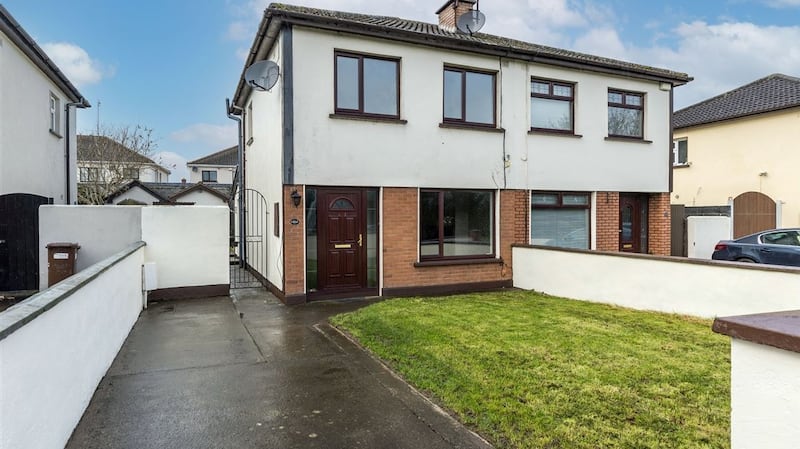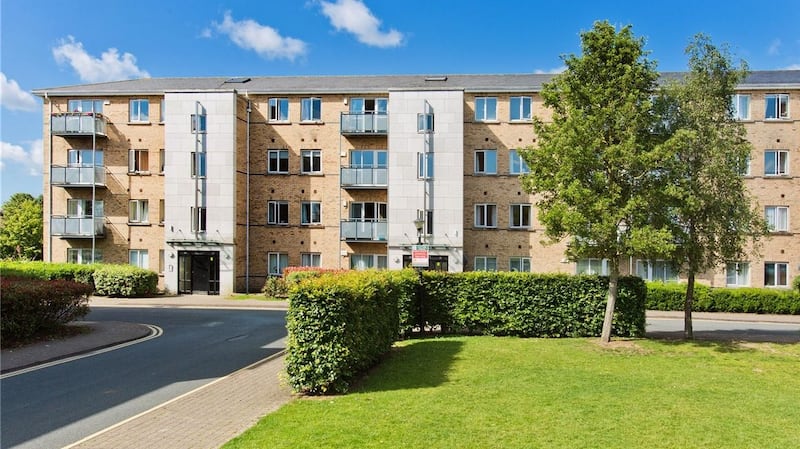A newly launched revamp of a State-sponsored home loan is expected to make it easier for single people – including those who are divorced or separated – to buy their own home. But how will the scheme work, and will it really achieve this goal?
On January 4th of this year, Minister for Housing, Local Government and Heritage Darragh O’Brien signed regulations giving effect to a new scheme.
The Local Authority Home Loan (LAHL) is the latest iteration of Government-backed mortgage lending, and follows on from the Rebuilding Ireland Home Loan (RIHL), which was launched in February 2018. The new scheme is part of the Government’s Housing for All plan, and it aims to further support access to homeownership for “creditworthy homebuyers who otherwise find it difficult to access sufficient finance”. Local authorities will have €250 million to lend through the scheme for 2022.
“The new regulations will make it easier for single people to avail of a State-backed mortgage for a new, second-hand or self-build home,” said Mr O’Brien.
Significantly, the new LAHL brings with it a major change which should give single buyers a better chance of getting onto the first rung of the property ladder.
The Government appears to have listened to the ESRI, which suggested in 2020 that the ceiling for single buyers was a limitation and “could be revisited”.
Previously, only those earning up to €50,000 could avail of the scheme; now the ceiling has been increased by 30 per cent to €65,000. This puts single earners almost on a par with couples with two incomes, who can have a joint income of only €75,000 to qualify.
Unfortunately, the new scheme also brings with it some of the baggage from the RIHL, which will likely diminish its attractiveness.
How to qualify
The goal of the LAHL is to offer those on lower incomes a better chance of accessing the housing market, by allowing them to borrow more than they otherwise might have done via traditional lenders, to purchase a new, second-hand or self-built home.
It does this by basing the lending decision on keeping mortgage repayments to a percentage of net monthly income, unlike traditional lenders, which are bound by the 3½ times income multiple rule.
Combined with a competitive interest rate, this means that those qualifying for the loan should be able to borrow more than they otherwise would.

The scheme is largely aimed at first-time buyers (FTBs) – and is also open for people who have been divorced or separated – between the ages of 18 and 70 who are in continuous employment for at least two years.
To qualify, as with the previous scheme, applicants must provide proof of insufficient mortgage offers of finance from two regulated financial providers.
Crucially, the new loan says it will make it easier for single people to buy a home as it has raised the income ceiling for a single applicant by a significant €15,000. This means that putative single home buyers across Dublin, Cork, Galway, Kildare, Louth, Meath and Wicklow will now be able to earn up to €65,000 a year and still qualify for the loan.
Outside of these areas, an income ceiling of €50,000 will still apply for single applicants, while the income ceiling for joint applicants remains at €75,000.
With a new interest rate mid-way between the original, and later versions of the RIHL scheme, applicants will be able to borrow more than they would via a traditional lender – but still perhaps not as much as they would like.
The interest rates that now apply to the scheme are 2.495 per cent over 25 years, and 2.745 per cent over 30 years.
A single applicant on €40,000, for example, will be able to borrow €172,535, with a monthly repayment of €774 based on a 25-year fixed-rate loan. This would fund a home worth €191,705, based on a 10 per cent deposit.
If they were to seek finance through a traditional lender, the most they could borrow, based on the Central Bank’s rules, is €140,000 (monthly repayment of €560), which would fund a purchase of about €155,555.
So the applicant is able to fund a home worth about 23 per cent more, thanks to the Government’s scheme.
And, thanks to the top income level of €65,000, a single would-be buyer on such an income (with no other borrowings) can now borrow €259,239, which would fund a home worth about €288,043.
With a traditional loan, such an applicant could borrow only about €227,500 based on a 3½ times income multiple – unless they could qualify for an exemption. This would buy a home worth about €252,777.
Applicants can also avail of the Help to Buy scheme, which provides for a tax rebate of up to €30,000 on a home valued at up to €500,000. This means that someone buying a new home could use the 10 per cent deposit they have saved to increase their budget for a home. So that €288,000 budget could then stretch to about €310,000.
Deposit
One characteristic of the new scheme – as was the case with the RIHL – is that it looks for evidence of a “strong savings history” from applicants. This means that they must show a “credible” savings record of at least 12 months’ duration immediately prior to making an application.
Not only that, but these cash savings must make up at least 3 per cent of the value of the property, so to buy a home worth €280,000, an applicant must show evidence that they themselves have saved €8,400. The remaining 7 per cent needed for the deposit can be made up of gifts, and other unborrowed sources.
“Even if gifts or money from other unborrowed sources make up more than 10 per cent of the purchase price, documented cash savings of at least 3 per cent of the purchase price are still required,” the application says, adding that “unidentified lump sum lodgements” made to a savings account within the 12-month period will not be considered when computing the deposit.
So those relying on the Bank of Mum and Dad to help fund their home purchase may struggle to qualify for the scheme.
What about divorced/separated applicants?
The scheme is largely aimed at first-time buyers (FTBs); however, it also aims to assist those who may not be FTBs but who are now buying a home for themselves as divorced or separated applicants.
Under its “Fresh Start” approach, it means that people who are divorced, legally separated/separated, or whose relationship has ended, and who have no financial interest in, or any borrowings in respect of, the family home are also eligible to apply.
The downsides
There are two challenges to the success of the scheme on two fronts: rising house prices and mortgage protection.
In relation to house prices, when the scheme was first launched back in 2018, the maximum house price that would qualify for it was €320,000. Now, some four years on, with house prices having advanced significantly in that period, house buyers are still locked into the €320,000 cap, or a maximum of about €260,000 for a single buyer.

This will make it difficult, but not impossible, to find a home. A quick search on Daft.ie, for example, shows that there are more than 800 homes for sale in Dublin at present at an asking price of less than €325,000, with about 450 for sale at less than €275,000.
It may also lead to house price inflation – with more people qualifying for a mortgage at a certain level, this could put pressure on prices in that bracket.
Secondly, the scheme is bringing with it an issue that dogged the success of its earlier iteration.
This is the compulsory expensive mortgage protection policy (MPP) which has to be taken out in conjunction with a LAHL, and which hurts on two fronts.
When queried about the appropriateness or otherwise of this measure, a spokesman for the Department of Housing says the requirement remains but will be “kept under review”.
Firstly, it is more expensive than market rates – a €250,000 mortgage, for example, will incur an annual charge of €1,337/€111.4 a month, given that the MPP is applied at a rate of 0.5348 per cent for 2022 (down from 0.55 per cent previously). If the homeowner could access this in the open market, they could acquire such a policy for less than €20 a month.
While the spokesman notes that the MPP offers additional protection – such as covering mortgage payments in case of disability – it is nonetheless significantly more expensive.
And this means that it also affects people’s ability to qualify for enough of a mortgage to buy a home. In the example of an applicant on €40,000 applying for a loan, they would have a monthly repayment of €681 if they didn’t have to pay the MPP. But with the insurance, their monthly repayment jumps to €774.
Falling approvals
The imposition of the MPP may be one of the reasons why the success of the scheme has reduced in recent years.
In the first half of 2021, for example, just 343 mortgages were approved, at a total value of €24.5 million, and 216 such loans drawn down. This compares with 574, at a total value of €95.5 million, and 556, respectively for the same period in 2019.
The figures also show that the scheme has become almost defunct in many places across the country – in the first half of 2021, for example, there were no approvals in Cork city, Offaly or Wicklow, with just two in Cavan, three in Dún Laoghaire-Rathdown, six in south Dublin and one in Co Galway. Dublin city accounted for the most, with 114 approvals in the first six months of 2021.
Indeed, while there is €250 million available to lend through the scheme for 2022, figures for the first half of 2022 show that just about €56 million in mortgages were approved during the six months, with €34 million drawn down.











